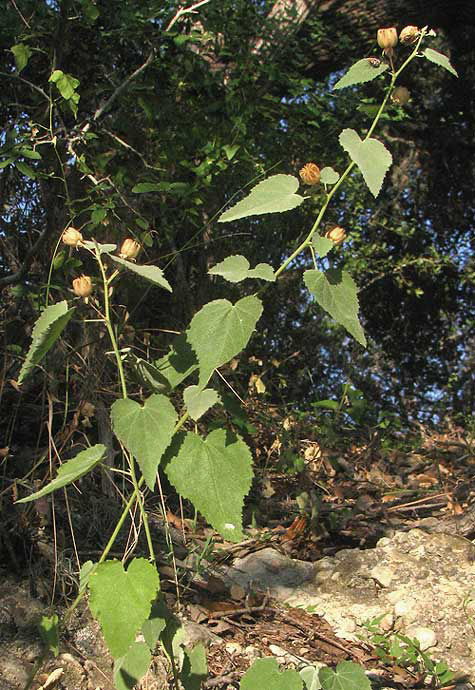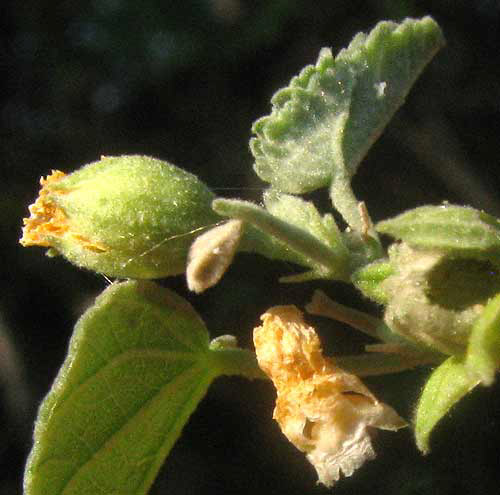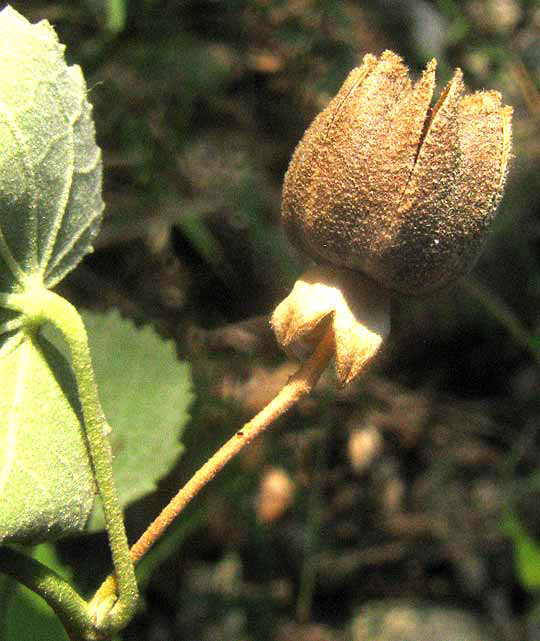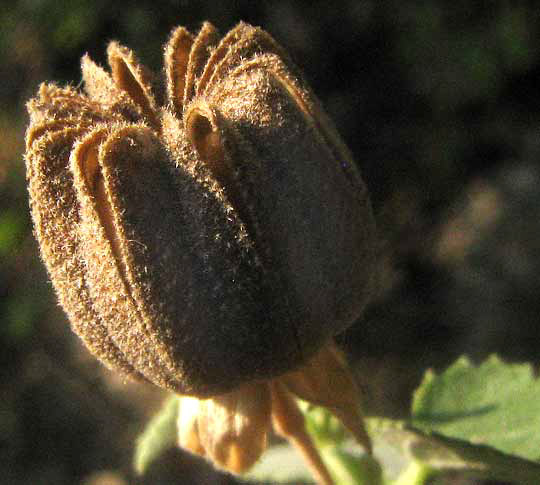Excerpts from Jim Conrad's
Naturalist Newsletter
from the September 1, 2013 Newsletter issued from the Frio Canyon Nature Education Center in the valley of the Dry Frio River in northern Uvalde County, southwestern Texas, on the southern border of the Edwards Plateau; elevation ~1750m (~5750 ft); N29.62°, W99.86°; USA
INDIAN MALLOW
In a shady spot of a limestone cliff cut by the little Dry Frio River, I ran into a member of this group whose flowering period had nearly passed, but it bore handsome and characteristic fruits, shown below:

The brown fruits are easy to see, but I had to search the branch tips of several plants before finding a withered flower that had just blossomed. Below, you can see it and a discarded corolla dangling below it on a spider silk:

In that picture at least we can confirm the flowers' orange-yellow color, and see the dense, velvety hairiness mantling the vegetative parts. A side view of a mature fruit is shown below:

There it's worth noting that the sepals below the brown fruit are somewhat enlarged and showing no signs of withering. In many species the sepals are shed when the flower is pollinated. A shot better showing the fruit's basic structure appears below:

This is a special kind of fruit known as a schizocarp, which means that each cell, or "carpel," of the flower's ovary matured into a dry, capsule-like division of the fruit. The capsule-like division is called a mericarp. The schizocarp in the picture is composed of eight splitting-open mericarps with each mericarp bearing two or three seeds. Mericarp and seed numbers are important for identification.
These and other features identify our limestone-cliff-loving herb as the Indian Mallow, ABUTILON FRUTICOSUM. It's closely related to and similar to Velvetleaf, Abutilon theophrastii, a common weed from Asia occurring across the US, but that species' schizocarps are composed of more numerous mericarps, and each of its mericarps' tops is sharply pointed instead of rounded like Indian Mallow's.
Indian Mallow, also known as Texas Indian mallow and Pelotazo, is native to the US south-central states and arid northeastern Mexico, where it's described as growing on cliffs, slopes, and limestone outcrops. Also, it's widely encountered in arid areas of western Africa to Arabia and India, so this is one of our native plants that has successfully invaded other countries.
Moreover, Indian Mallow is eaten by many grazing animals, its seeds are fed on by small birds, it serves as a host for the larvae of several skipper butterfly species, its stem fibers are strong enough for making ropes and for weaving, and, to cap it all off, it's such a handsome plant and needs so little water that it's a good candidate for xeriscaping.